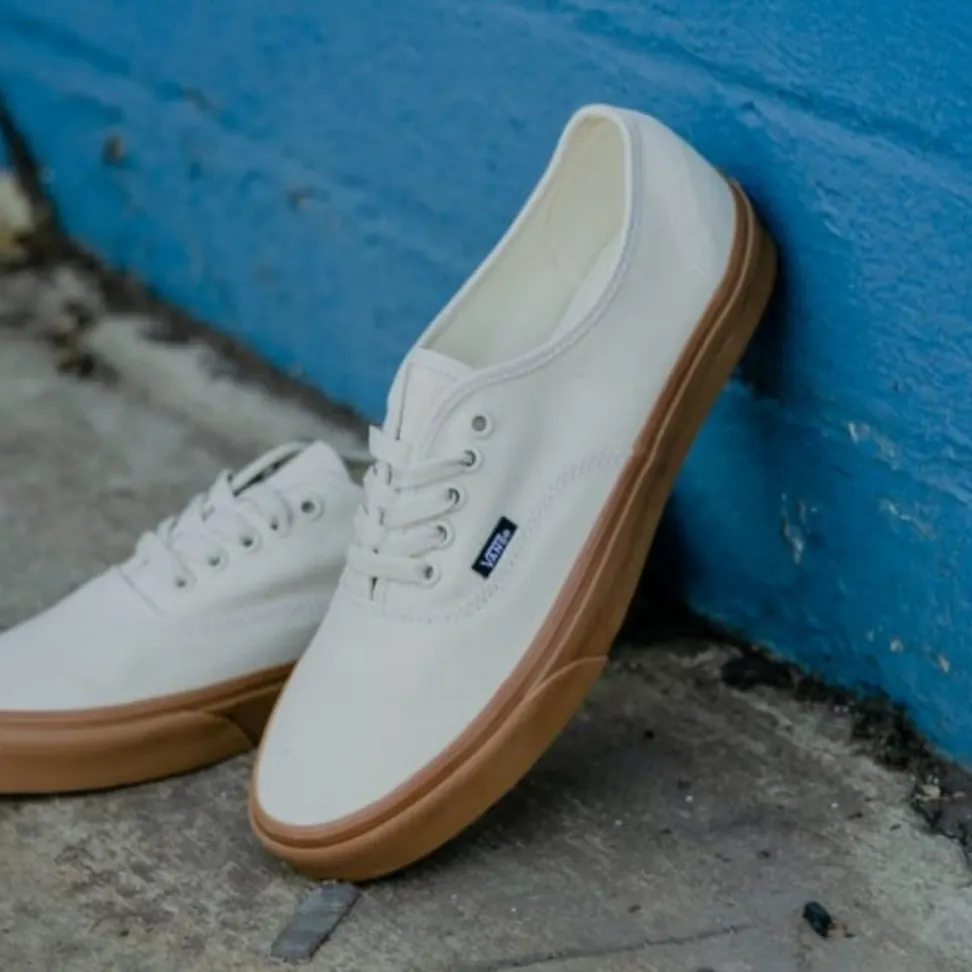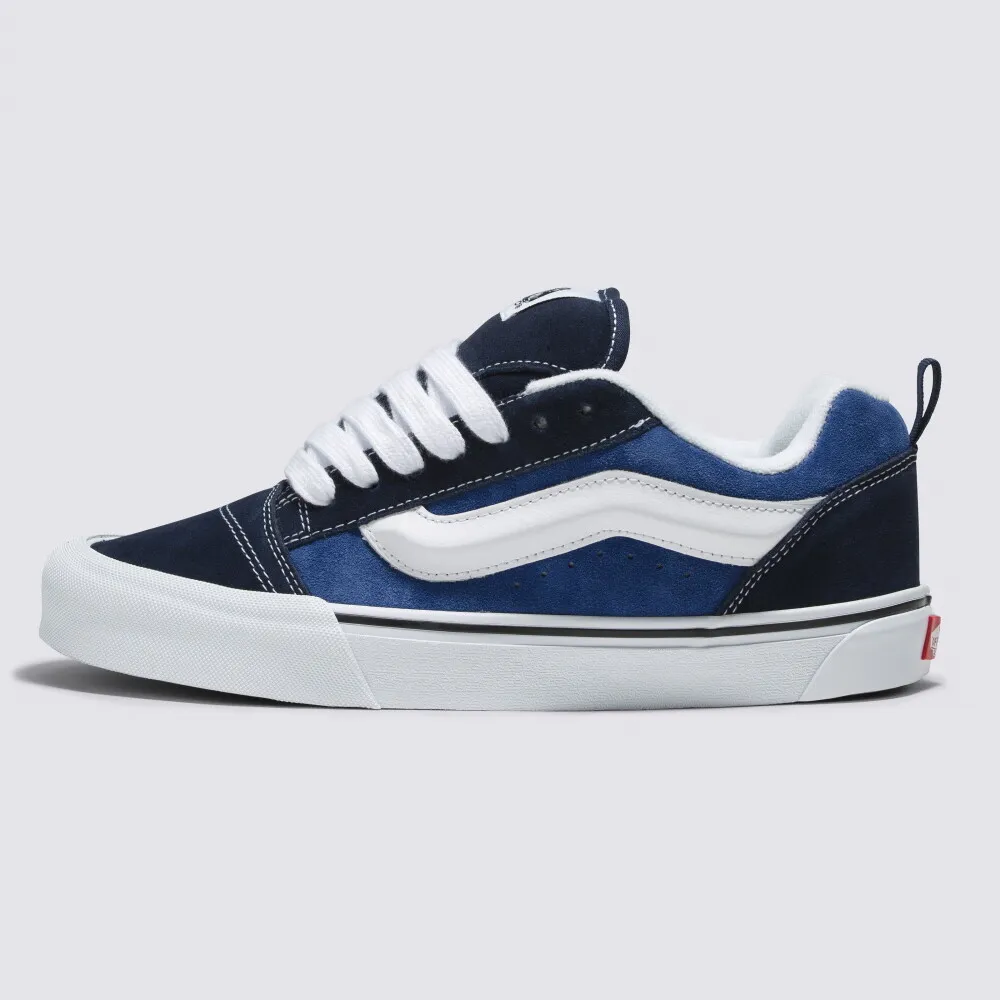
Vans Sneakers: From Skate Parks to Global Fashion
The Birth of a Legend
In the sun-soaked landscape of 1960s Southern California, a revolution in footwear was quietly taking shape. The Van Doren Rubber Company, founded by brothers Paul and James Van Doren, along with partners Gordon Lee and Serge Delia, opened its doors in 1966 with a simple yet ambitious goal: to manufacture and sell high-quality, affordable shoes directly to the public. Little did they know that their creation, which would soon become known worldwide as Vans sneakers, was destined to transcend its humble origins and become an enduring symbol of youth culture, rebellion, and self-expression.
The company’s first day of business saw the production of 12 pairs of shoes, each crafted on-site and sold directly to eager customers. This direct-to-consumer approach, revolutionary for its time, allowed Vans to quickly establish a reputation for quality and customization. Customers could choose their preferred colors and styles, and the shoes would be ready for pickup later that same day. This unique business model, coupled with the shoes’ durable construction featuring thick rubber soles and sturdy canvas uppers, quickly caught the attention of a diverse clientele. However, it was a particular group of young, energetic individuals who would ultimately shape the brand’s destiny and propel it to unprecedented heights.

Riding the Wave of Skate Culture
As Vans sneakers gained traction in the local community, an unexpected group of enthusiasts began to gravitate towards the brand: skateboarders. The shoes’ grippy rubber soles and durable construction proved ideal for the demands of skateboarding, a sport that was rapidly gaining popularity in Southern California. This organic adoption by skateboarders would prove to be a pivotal moment in Vans’ history, setting the stage for decades of cultural significance.
Recognizing the potential of this unexpected market, Vans began to tailor its designs to meet the specific needs of skateboarders. The company collaborated with legendary skaters like Tony Alva and Stacy Peralta to develop shoes that could withstand the rigors of the sport while providing superior board feel and control. This collaboration led to the creation of iconic styles such as the Era, which featured additional padding and a variety of color combinations. The strong connection between Vans and skate culture grew exponentially, with the brand becoming synonymous with the sport’s rebellious and creative spirit. As skateboarding evolved from a niche activity to a global phenomenon, Vans rode the wave, expanding its influence far beyond the sun-drenched skate parks of Southern California.
The Rise of Iconic Styles
Building on the success of its early models, Vans continued to innovate and introduce new styles that would become timeless classics. In 1977, the company unveiled the Old Skool, featuring the now-famous “jazz stripe” – a simple yet distinctive side stripe that has become one of the most recognizable elements of Vans’ design language. The Old Skool quickly gained popularity among skaters and non-skaters alike, appreciated for its versatile style and durable construction. Shortly after, in 1978, Vans introduced the Sk8-Hi, a high-top version of the Old Skool that offered additional ankle protection for skaters.
This innovative design not only addressed a practical need but also became a canvas for creative expression. With its larger surface area allowing for bold colorways and custom designs. However, it was the release of the Slip-On in 1979 that truly catapulted Vans into mainstream consciousness. The Slip-On’s simple, laceless design made it an instant hit, offering both comfort and style in a convenient package. These iconic styles, along with the original Authentic model, form the core of Vans’ identity and continue to be popular choices for both skaters and fashion enthusiasts alike. The enduring appeal of these classic designs speaks to Vans’ ability to create timeless footwear that transcends generations and cultural boundaries.

Hollywood Spotlight and Cultural Impact
While Vans had already established a strong following in the skateboarding community. A pivotal moment in 1982 thrust the brand into the national spotlight. The release of the cult classic film “Fast Times at Ridgemont High” featured the character Jeff Spicoli, played by Sean Penn, wearing a pair of checkerboard Slip-Ons. This high-profile exposure sparked a nationwide demand for Vans, transforming the once-niche skate shoe into a must-have fashion item. The checkerboard pattern, originally inspired by skaters who drew the design on their shoes, became an instant classic and remains one of Vans’ most recognizable motifs.
This Hollywood moment marked a turning point for Vans, expanding its appeal beyond the skateboarding community and into mainstream fashion. The brand’s association with youth culture and rebellion was further solidified, attracting a new generation of consumers who were drawn to its authentic, counterculture image. As a result, Vans experienced explosive growth throughout the 1980s, with sales skyrocketing and the brand’s presence expanding across the United States and beyond. This period of rapid expansion, however, would soon lead to challenges that would test the company’s resilience and commitment to its core values.
Weathering Challenges and Emerging Stronger
Despite its meteoric rise in popularity, Vans sneakers faced significant challenges in the mid-1980s. The rapid expansion and diversification of product lines, coupled with financial mismanagement, led the company to file for Chapter 11 bankruptcy protection in 1984. This setback forced Vans to reevaluate its strategy and refocus on its core products and values. Under new ownership and management, the company emerged from bankruptcy in 1987, stronger and more focused than ever. This period of restructuring saw Vans returning to its roots. Emphasizing the quality and authenticity that had made it popular in the first place.
The company streamlined its product offerings, focusing on its classic styles and skateboarding heritage. This back-to-basics approach resonated with consumers, who appreciated Vans’ commitment to its original vision and values. The brand’s resilience in the face of adversity only served to strengthen its bond with loyal customers. Who saw Vans as more than just a shoe company, but as a symbol of perseverance and authenticity. This ability to weather challenges and emerge stronger would become a hallmark of the Vans brand, endearing it further to its growing fanbase and setting the stage for future success.

The 1990s: Vans Sneakers and the Alternative Music Scene
As skateboarding culture continued to evolve and intertwine with alternative music in the 1990s. Vans found itself at the center of a cultural zeitgeist. The brand became closely associated with punk rock and grunge music scenes, sponsoring tours and creating signature shoes for bands. This connection between Vans and alternative music was solidified in 1995 with the launch of the Vans Warped Tour. A traveling music and extreme sports festival that would run for over two decades. The Warped Tour brought together emerging and established punk, ska, and alternative rock bands with skateboarding demonstrations and competitions. Creating a unique cultural experience that resonated with youth across America.
Vans’ involvement in the music scene extended beyond sponsorship. With the brand collaborating with numerous artists and bands to create limited-edition shoes and merchandise. These collaborations not only appealed to music fans but also reinforced Vans’ status as a brand that supported and celebrated creativity in all its forms. The 1990s also saw Vans expanding its presence in other action sports, including surfing, snowboarding, and BMX, further cementing its position as the go-to brand for alternative sports and lifestyles. This diversification, coupled with its strong ties to music and youth culture. Ensured that Vans remained relevant and appealing to a new generation of consumers.
Global Expansion and Fashion Crossover
As Vans sneakers entered the new millennium, the brand’s appeal transcended geographical and cultural boundaries. What began as a small, family-owned company in Southern California had grown into a global phenomenon. With Vans shoes adorning the feet of individuals from Tokyo to London, São Paulo to Sydney. This global expansion brought with it new opportunities and challenges. As Vans sought to maintain its authentic image while appealing to diverse international markets. Simultaneously, the fashion world began to take notice of Vans’ enduring style and cultural significance. High-profile collaborations with designers, artists, and luxury brands introduced Vans to new audiences while maintaining the brand’s street credibility.
Limited-edition releases with Supreme, collections inspired by iconic artists like Frida Kahlo, and partnerships with high-end fashion houses demonstrated Vans’ versatility and enduring appeal across various subcultures and fashion segments. These collaborations not only generated buzz and desirability for the brand but also allowed Vans to experiment with new materials, designs, and marketing strategies. The success of these ventures further solidified Vans’ position as a brand that could seamlessly blend street culture with high fashion. Appealing to a wide range of consumers from skateparks to runways.
Innovation and Performance
While Vans sneakers has always been rooted in its classic styles, the brand has not shied away from innovation. Responding to the evolving needs of skateboarders and athletes. Vans has continuously improved its designs and materials to enhance performance without sacrificing style. The introduction of the UltraCush HD sockliners provided superior cushioning and impact protection, addressing the demands of modern skateboarding. Similarly, the development of the Wafflecup construction technology offered the perfect balance of support and board feel. Combining the best elements of cupsole and vulcanized sole constructions. Beyond skateboarding,
Vans has expanded its technological innovations to other action sports. The brand’s surf boot collection, featuring water-resistant materials and specialized grip patterns. Caters to the needs of surfers in various conditions. In snowboarding, Vans has developed boots with advanced lacing systems and temperature-regulating materials to ensure comfort and performance on the slopes. These innovations demonstrate Vans’ commitment to supporting athletes across multiple disciplines while staying true to its heritage of style and authenticity. By continuously pushing the boundaries of performance and design. Vans ensures that it remains relevant to both casual wearers and dedicated athletes. Maintaining its position at the forefront of action sports footwear.

Sustainability and Social Responsibility
In recent years, Vans has taken significant steps towards sustainability and social responsibility, recognizing the importance of environmental stewardship and community engagement. The brand has introduced eco-friendly materials and manufacturing processes. Aiming to reduce its environmental footprint without compromising on quality or style. The Vans Eco Theory collection showcases this commitment. Featuring shoes made from organic cotton, natural rubber, and water-based inks and glues. These initiatives not only appeal to environmentally conscious consumers but also set a standard for sustainable practices in the footwear industry.
Beyond environmental concerns, Vans has launched various programs to support local communities and promote inclusivity in action sports. The Vans Checkerboard Day, an annual event dedicated to championing creative expression, has raised millions of dollars for charities that support mental health and well-being through creativity. Additionally, Vans has partnered with organizations that provide skate lessons and mentorship to underprivileged youth. Fostering a new generation of skateboarders and creatives. These efforts demonstrate Vans’ commitment to giving back and using its platform to make a positive impact on society. By aligning its business practices with its values, Vans strengthens its connection with consumers who prioritize ethical and sustainable brands.
The Future of Vans: Honoring Heritage While Embracing Change
As Vans approaches its 60th anniversary, the brand stands at a unique crossroads. Balancing its rich heritage with the need to evolve in an ever-changing fashion landscape. The challenge lies in maintaining the authentic, rebellious spirit that has defined Vans for decades while adapting to new consumer preferences and global challenges. Looking to the future, Vans continues to invest in sustainable practices, digital innovation, and community engagement. The brand’s ongoing commitment to supporting creativity and self-expression through initiatives like the Vans Custom Culture competition. Which encourages high school students to showcase their artistic talents. Ensures that Vans remains connected to youth culture.
Technological advancements in manufacturing and materials science offer opportunities for Vans to further improve the performance and sustainability of its products. At the same time, the rise of digital platforms and e-commerce presents new ways for Vans to engage with consumers and tell its brand story. As streetwear continues to influence high fashion and vice versa. Vans is well-positioned to bridge these worlds, offering products that appeal to a diverse range of consumers. By staying true to its roots while embracing change. Vans is poised to maintain its status as a cultural icon for years to come. Inspiring future generations to express themselves through creativity, sports, and style.

